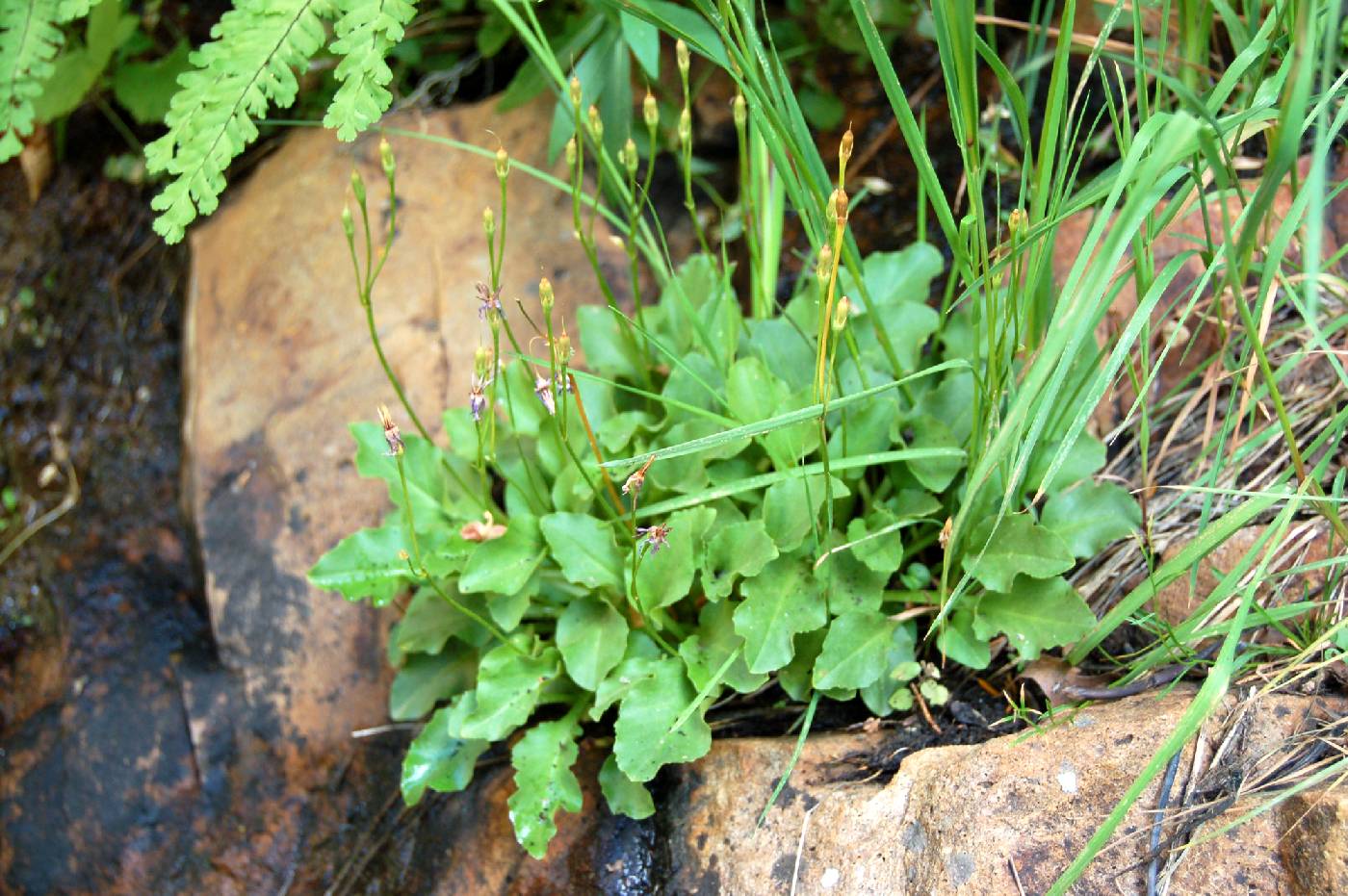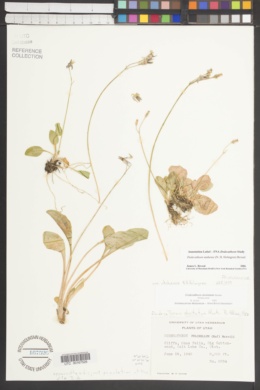
|
|
|
|
Family: Primulaceae
|
Plants (8-)10-25(-30) cm; scape glabrous. Caudices not obvious at anthesis; roots whitish; bulblets absent. Leaves 4-12(-20) × (1-)1.5-4(-4.5) cm; petiole slender (at least basally); blade oblanceolate to broadly elliptic, base slightly decurrent onto stem in some, abruptly tapering to petiole, margins slightly sinuate to subentire, surfaces glabrous. Inflorescences 2-6(-9)-flowered; bracts linear to narrowly lanceolate, 4-8(-10) mm, glabrous. Pedicels (0.5-)0.8-3.5(-4.5) cm, glabrous. Flowers: calyx green, speckled with maroon, 3-6 mm, glabrous, tube 1-3 mm, lobes 5, 2-3 mm; corolla tube white or yellowish with reddish to maroon, thin, wavy ring, lobes 5, pale lavender to pink, (7-)10-16 mm; filaments slightly connate, tube yellow with maroon speckles or stripes to purplish maroon, 0.5-1.8 × 0.5-1 mm; anthers (5-)6-7.5 mm; pollen sacs maroon, connective dark purple to maroon, smooth; stigma not enlarged compared to style. Capsules light green to tan, often speckled with maroon, reddish brown apically, valvate, narrowly ovoid, 8-10 × 3-4 mm, glabrous; walls thin, pliable. Seeds without membrane along edges. Flowering late spring-summer. Moist, shady limestone cliffs in open conifer woodlands; of conservation concern; 2100-2900 m; Utah. Dodecatheon utahense is known only from from both sides of the road at Moss Ledge in Big Cottonwood Canyon and from the Lake Blance area, Salt Lake County. The plants can have a narrow caudex to which long trailing leaves and roots are attached, the plants often hanging from steep canyon walls. Other plants tend to occur in the cracks of the rocks on a compact caudex; these plants usually are upright and tend to be much shorter (to 20 cm) compared to the hanging plants.
|
This project was made possible in part by the Institute of Museum and Library Services [MG-70-19-0057-19].
Powered by Symbiota




